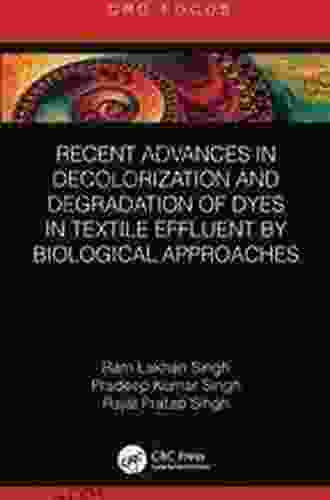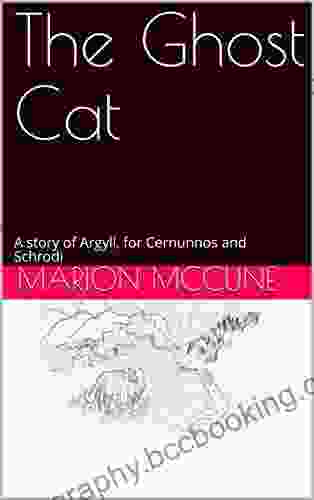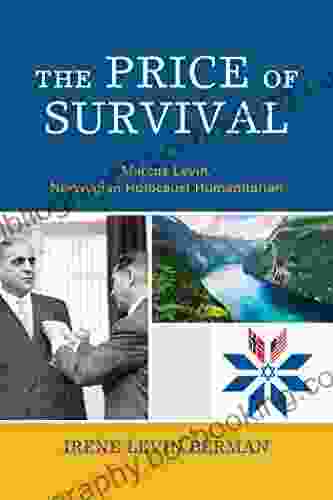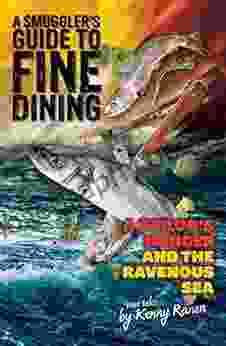Recent Advances In Decolorization And Degradation Of Dyes In Textile Effluent

4.8 out of 5
| Language | : | English |
| File size | : | 1817 KB |
| Text-to-Speech | : | Enabled |
| Screen Reader | : | Supported |
| Enhanced typesetting | : | Enabled |
| Print length | : | 88 pages |
The textile industry is one of the major sources of water pollution, with wastewater from textile mills containing a wide range of synthetic dyes that are difficult to remove and can have adverse effects on the environment. Dyes can be toxic to aquatic organisms, inhibit sunlight penetration, and disrupt the ecological balance of water bodies. Traditional methods for dye removal, such as coagulation-flocculation and sedimentation, are often ineffective in removing these dyes from wastewater. In recent years, advanced and sustainable techniques have been developed to address this challenge and achieve efficient decolorization and degradation of dyes in textile effluent.
Advanced Oxidation Processes
Advanced oxidation processes (AOPs) are a class of chemical processes that generate highly reactive hydroxyl radicals (OH-) which can oxidize and degrade organic pollutants, including dyes. AOPs can be used to treat textile wastewater and achieve high levels of dye removal. Some of the most commonly used AOPs include:
- Ozonation
- Fenton process
- Photocatalytic oxidation
- Electrochemical oxidation
AOPs are effective in degrading a wide range of dyes, including azo dyes, anthraquinone dyes, and disperse dyes. However, they can be energy-intensive and may require additional treatment steps to remove residual oxidants and byproducts.
Adsorption
Adsorption is a physical process that involves the adhesion of dye molecules onto the surface of an adsorbent material. Various adsorbents, such as activated carbon, zeolites, and biochar, have been used to remove dyes from textile wastewater. Adsorption is a relatively simple and cost-effective technique, and it can achieve high dye removal efficiency under certain conditions.
The effectiveness of adsorption depends on the properties of the adsorbent material, the characteristics of the dye, and the process conditions. Some of the factors that affect adsorption efficiency include the surface area and porosity of the adsorbent, the pH of the solution, and the temperature.
Biodegradation
Biodegradation is a biological process in which microorganisms, such as bacteria and fungi, break down and degrade organic pollutants, including dyes. Biodegradation is a promising approach for the treatment of textile wastewater, as it is relatively inexpensive and environmentally friendly.
A variety of microorganisms have been isolated and identified for their ability to degrade dyes. These microorganisms can produce enzymes that break down the complex structure of dyes into simpler molecules that can be further metabolized and used as a source of energy and nutrients.
Biodegradation is effective in degrading a wide range of dyes, including azo dyes, anthraquinone dyes, and disperse dyes. However, biodegradation can be slow and may require a long residence time to achieve complete dye removal.
Membrane Technologies
Membrane technologies, such as ultrafiltration (UF),nanofiltration (NF),and reverse osmosis (RO),can be used to separate and remove dyes from textile wastewater. Membrane technologies are based on the principle of size exclusion, where the membrane acts as a barrier that allows water and small molecules to pass through while retaining larger molecules, such as dyes.
Membrane technologies are effective in removing dyes from wastewater, and they can achieve high rates of dye rejection. However, membrane technologies can be expensive and may require pretreatment of wastewater to remove suspended solids and other impurities that can foul the membranes.
Combination of Techniques
The combination of different dye removal techniques can often achieve better results than using a single technique alone. For example, AOPs can be combined with adsorption or biodegradation to enhance dye removal efficiency and reduce the formation of byproducts. Membrane technologies can be used to remove residual dyes and byproducts from AOPs or biodegradation processes.
The selection of the most appropriate dye removal technique or combination of techniques depends on the specific characteristics of the textile wastewater, the desired level of dye removal, and the cost and environmental considerations.
Nanomaterials and Microorganisms
Nanomaterials and microorganisms are playing an increasingly important role in the development of new and innovative dye removal technologies. Nanomaterials, such as carbon nanotubes, graphene oxide, and metal-organic frameworks, have high surface area and unique physicochemical properties that make them effective adsorbents for dyes. Microorganisms can be engineered to produce enzymes that specifically target and degrade certain dyes.
The combination of nanomaterials and microorganisms can lead to the development of highly efficient and sustainable dye removal systems. For example, nanomaterials can be used to enhance the adsorption capacity and biodegradability of microorganisms.
Future Research Directions
Continued research is needed to develop more efficient and cost-effective dye removal technologies. Some of the key research directions include:
- Development of new AOPs with higher efficiency and reduced energy consumption
- Identification and development of new adsorbents with higher adsorption capacity and selectivity for dyes
- Isolation and characterization of new microorganisms with enhanced dye degradation capabilities
- Development of hybrid systems that combine different dye removal techniques to achieve synergistic effects
- Investigation of the environmental fate and toxicity of dye removal byproducts
By addressing these research challenges, we can develop more effective and sustainable solutions for the treatment of textile wastewater and the protection of the environment.
The development of advanced and sustainable dye removal technologies is critical for the protection of the environment and the sustainable development of the textile industry. Recent advances in decolorization and degradation of dyes in textile effluent have shown promising results, and the combination of different techniques, the use of nanomaterials and microorganisms, and continued research efforts hold great potential for the development of even more efficient and cost-effective dye removal systems.
4.8 out of 5
| Language | : | English |
| File size | : | 1817 KB |
| Text-to-Speech | : | Enabled |
| Screen Reader | : | Supported |
| Enhanced typesetting | : | Enabled |
| Print length | : | 88 pages |
Do you want to contribute by writing guest posts on this blog?
Please contact us and send us a resume of previous articles that you have written.
 Book
Book Novel
Novel Page
Page Chapter
Chapter Text
Text Story
Story Genre
Genre Reader
Reader Library
Library Paperback
Paperback E-book
E-book Magazine
Magazine Newspaper
Newspaper Paragraph
Paragraph Sentence
Sentence Bookmark
Bookmark Shelf
Shelf Glossary
Glossary Bibliography
Bibliography Foreword
Foreword Preface
Preface Synopsis
Synopsis Annotation
Annotation Footnote
Footnote Manuscript
Manuscript Scroll
Scroll Codex
Codex Tome
Tome Bestseller
Bestseller Classics
Classics Library card
Library card Narrative
Narrative Biography
Biography Autobiography
Autobiography Memoir
Memoir Reference
Reference Encyclopedia
Encyclopedia Mary White Rowlandson
Mary White Rowlandson Tony Horton
Tony Horton J P Moreland
J P Moreland Hulda Bachman Neeb
Hulda Bachman Neeb Mary Alice Monroe
Mary Alice Monroe Sara King
Sara King Ian Condry
Ian Condry Pedro Sarmiento De Gamboa
Pedro Sarmiento De Gamboa Hwei P Hsu
Hwei P Hsu Lance Rogers
Lance Rogers Josh Kilmer Purcell
Josh Kilmer Purcell Inder Malhotra
Inder Malhotra John R Bruning
John R Bruning Ian Mcleod
Ian Mcleod Jack Burns
Jack Burns Tania Zamorsky
Tania Zamorsky Terry Harrison
Terry Harrison Martin Chu Shui
Martin Chu Shui John Hopkins
John Hopkins Imogen Reed
Imogen Reed
Light bulbAdvertise smarter! Our strategic ad space ensures maximum exposure. Reserve your spot today!
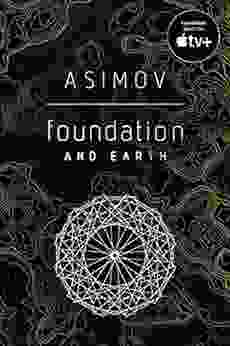
 Danny SimmonsUnravel the Secrets of the Distant Future in Isaac Asimov's 'Foundation and...
Danny SimmonsUnravel the Secrets of the Distant Future in Isaac Asimov's 'Foundation and... Vic ParkerFollow ·15.2k
Vic ParkerFollow ·15.2k Pablo NerudaFollow ·14k
Pablo NerudaFollow ·14k Benjamin StoneFollow ·17.2k
Benjamin StoneFollow ·17.2k Ian PowellFollow ·12.3k
Ian PowellFollow ·12.3k Ryan FosterFollow ·18.9k
Ryan FosterFollow ·18.9k F. Scott FitzgeraldFollow ·14.3k
F. Scott FitzgeraldFollow ·14.3k Clark BellFollow ·10.8k
Clark BellFollow ·10.8k Jaylen MitchellFollow ·4.9k
Jaylen MitchellFollow ·4.9k
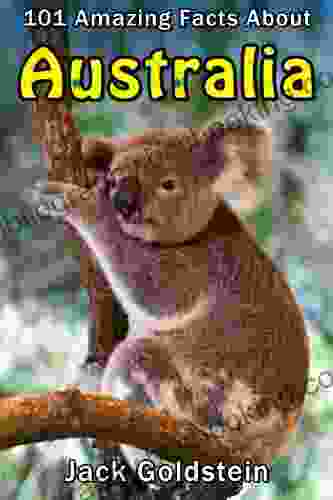
 Luke Blair
Luke Blair101 Amazing Facts About Australia: A Journey Through the...
A Literary Expedition Unveiling the Treasures...
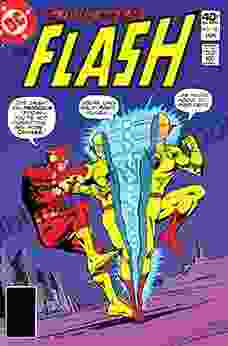
 Harry Hayes
Harry HayesWitness the Velocity and Legacy of the Scarlet Speedster:...
Delve into the Lightning-Charged...
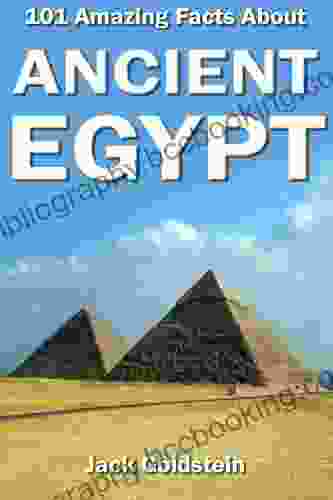
 Stan Ward
Stan Ward101 Amazing Facts About Ancient Egypt: Unraveling the...
: A Timeless Realm of Wonder Ancient Egypt, a...

 Stephen King
Stephen KingEscape into Adventure: Unveil the Secrets of Adventure...
In the annals of comic book history,...
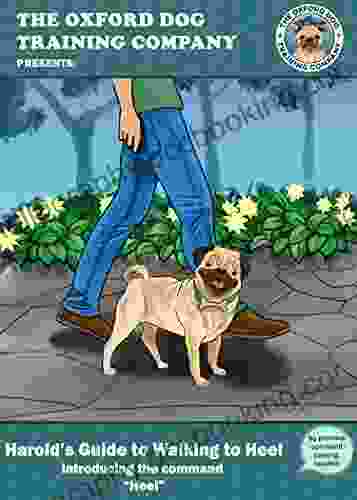
 Forrest Blair
Forrest BlairThe Oxford Dog Training Company Presents: A Holistic...
In the realm of dog...
4.8 out of 5
| Language | : | English |
| File size | : | 1817 KB |
| Text-to-Speech | : | Enabled |
| Screen Reader | : | Supported |
| Enhanced typesetting | : | Enabled |
| Print length | : | 88 pages |


